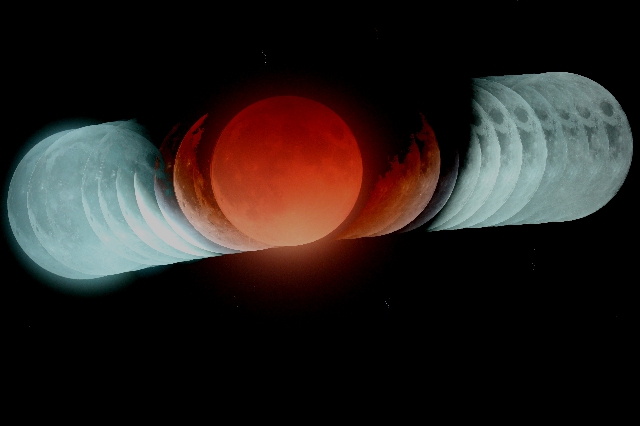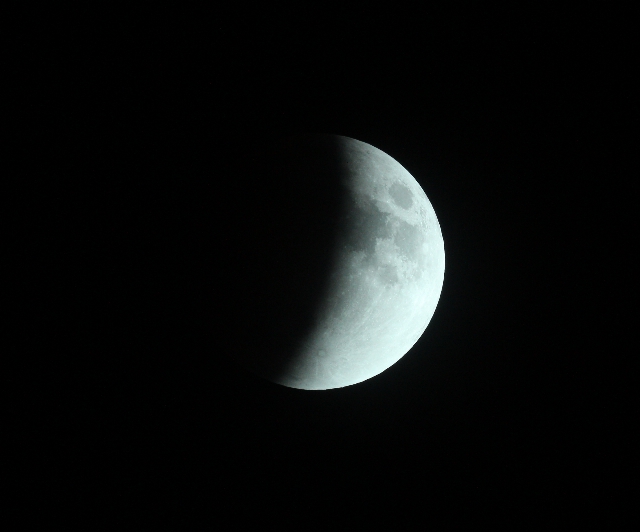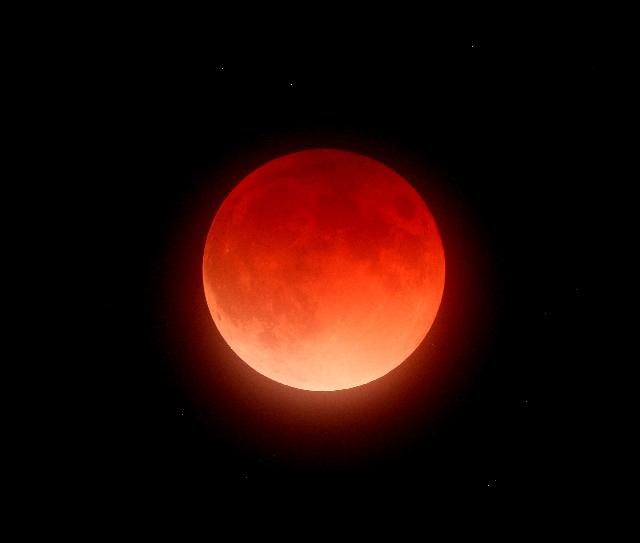
2018/01/31T20:29:55〜24:30:20 露光時間1/5000秒〜15秒 ISO800

2018/01/31T21:21:12 露光時間1/500秒 ISO800

2018/01/31T22:41:40 露光時間8秒 ISO800
Epsikon160/530mm+Canon60D+タカハシEM-200赤道儀
SiriusComp64で84枚を比較明合成、StellaImage6.5でレベル補正とリサイズ
|
* January 31st’s Total Lunar Eclipse * |
|
A total lunar eclipse, though less dramatic than a solar eclipse, is nevertheless a sight to behold. The full Moon (total lunar eclipses by definition can only occur when the Moon is full) gradually darkens, then turns a smoldering coppery color. The total lunar eclipse of January 31, 2018, garnered a lot of attention since it was the second full Moon of the month, and the Moon had just passed perigee the day before, engendering higher-than-usual tides in coastal areas.
But the latter two points did not distract from the wonder of the phenomenon itself: Three celestial bodies are aligned in such a way that one body blocks the light from another. It’s straightforward physics, as is the fact that the surface of the Moon turns that reddish or orange-ish color due to the refraction of the light from the Sun by the Earth’s atmosphere. Witnessing a lunar eclipse is witnessing physics ? and astronomy ? in action. |
2018年01月31日 画面上が北、左が東


